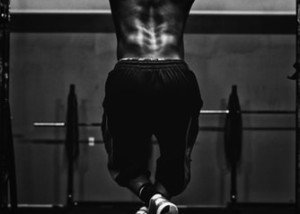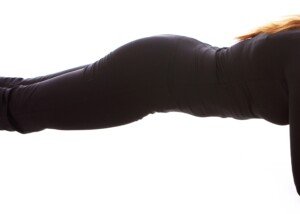
Here is your simple explanation for what sarcoplasmic hypertrophy really is.
Sarcoplasmic hypertrophy is the goal of bodybuilders, because bodybuilders want to get as big as possible – in terms of muscle belly size, a sculpted appearance, and a “bulging” appearance for some competitive bodybuilders.
The muscle belly is the main part of a muscle that you see in someone with pronounced development.
Sarcoplasmic hypertrophy is also the goal of people wanting to gain mass and have impressive musculature, though not necessarily as big as possible (e.g., the look of modern-day action movie stars).
In a muscle cell, sarcoplasm is the fluid-like substance that surrounds the filaments that contain the proteins responsible for muscle contraction.
When this fluid becomes more filled up with its components, it causes the entire muscle fiber unit to increase in size.
The components of sarcoplasm are what enables a person to train hard to fatigue. Those components include microscopic blood vessels and glycosomes; glycosomes store sugar that the muscle cell needs for fuel.
For maximal hypertrophy gains, the general rule is that one should train in the 8-12 rep range, to muscle failure for most sets.
This means that if they can perform a 13th repetition, the weight load needs to be increased to reset them back into the 8-12 rep max range.
Training like this forces muscle cells into a very fatigued state. As a response, the number of blood vessels (capillaries) and glycosomes, plus other “metabolic machinery” inside the sarcoplasm, increases in number.
This fills out the sarcoplasm, making it expand, and hence, making the muscle get bigger.
The muscle fiber also becomes more capable of training with heavier weights, as the athlete keeps pushing and gritting through the uncomfortable fatigue or “burn.”
The 8-12 rep max, or bodybuilding protocol, involves sets that last at least 8-10 seconds.
This is about how long it takes for a muscle cell to use up energy before hitting fatigue.
The athlete becomes stronger, but not maximally strong; however, the athlete experiences a lot of mass gain.
Sarcoplasmic Hypertrophy vs. Myofibrillar Hypertrophy
Some schools of thought will argue that the 8-12 RM isn’t absolute when it comes to sarcoplasmic hypertrophy, but as mentioned already, this is the general rule—in combination with short rests in between sets: anywhere from about a minute to 90 seconds.
If rests between sets are too lengthy, then the training effect will shift away from sarcoplasmic hypertrophy and towards myofibrillar hypertrophy.
People who focus on maximal strength for a one rep max or say, four or five rep max, will take breaks from two to four or more minutes between sets.
You’ll note that most competitive powerlifters (whose training is based on longer rests and fewer reps per set including one rep maxes) are smaller in musculature than same-height bodybuilders.
Some powerlifters, though, are also bodybuilders, which is why some champion powerlifters are huge.
 Lorra Garrick is a former personal trainer certified through the American Council on Exercise. At Bally Total Fitness she trained women and men of all ages for fat loss, muscle building, fitness and improved health.
Lorra Garrick is a former personal trainer certified through the American Council on Exercise. At Bally Total Fitness she trained women and men of all ages for fat loss, muscle building, fitness and improved health.
.


























